Balanced Walking in Older Age
We assume in our culture that aging will necessarily be accompanied by a loss of height, increasingly stooped posture, loss of muscle strength, and a precarious inability to balance. But is this really the inevitable trajectory? Here we look at why this occurs and focus on how a healthy gait can help us maintain good balance throughout life, including into old age.
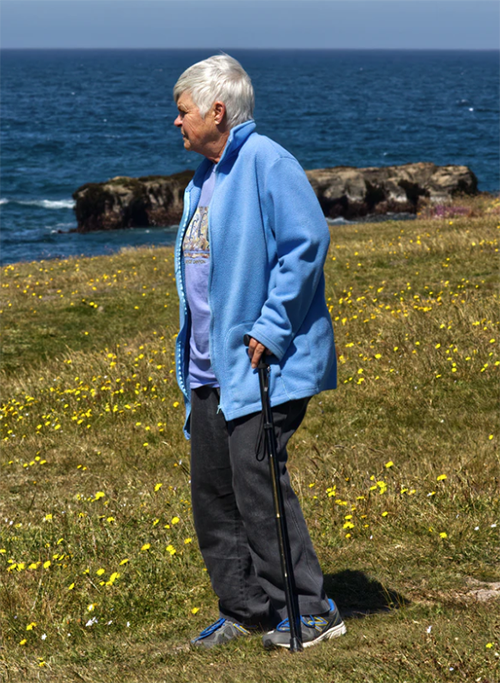
Walking sticks and poles help prevent falls but are poor compensation for loss
of natural stability and balance from the feet and buttocks. Unsplash
Falls can have fatal consequences for the elderly, potentially resulting in broken bones and a cascade of problems that can ensue from hospitalization, injury, surgery, and immobility. Scientific data followed by the U.S. Department of Health and Human Services (HHS) has linked several known risk factors, attributing most falls to muscle weakness and problems with balance and gait. Conversely, elderly people who maintain their strength and ability to balance have been shown to mostly avoid trips, slips, and falls.
The importance of the glutes
When it comes to balance, there is good evidence to confirm that the role of the gluteal muscles (buttocks) is key. Research¹ has shown that having strong gluteal muscles and hip abductors differentiates non-fallers from fallers. These muscle groups include gluteus medius, a muscle that we pay a good deal of attention to in both our online Elements course and in-person Gokhale Method Foundations Course.
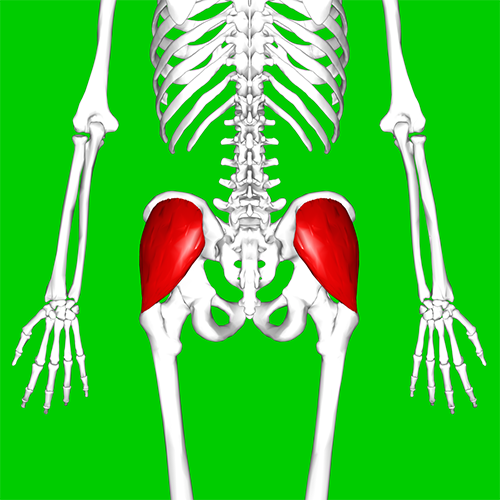
The gluteus medius muscles form the
upper outer quadrants of the buttocks. Wikimedia
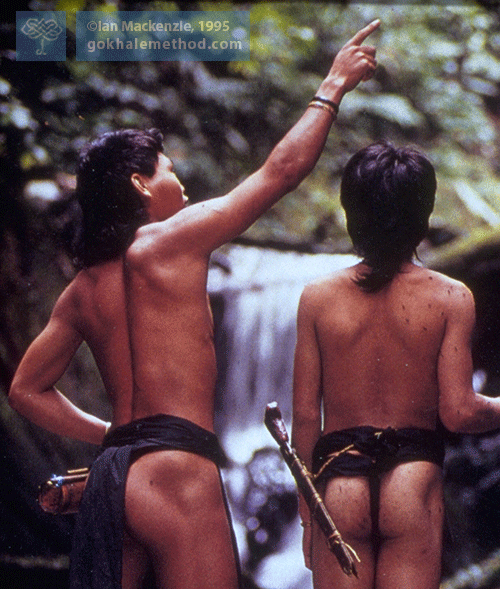
Healthily developed gluteus medius muscles are clearly visible
in these Ubong tribesmen. (Borneo, Indonesia)
The attachments of gluteus medius high on the pelvis and wide at the hip joint position it to play an important role in steadying us when we walk. With a little coaching, it is easy to monitor its degree of engagement with the fingertips. This is also a good way of ensuring that other important muscles in the area are performing their function.

People who walk well use their back leg and glute strongly
to propel themselves forward and maintain their balance.
Should I do glute exercises?
Well-targeted exercises are an effective intervention for jump-starting weak and sleepy glutes, and are therefore included in our courses. But your glutes would like around 5000 reps a day to maintain a good baseline tone—enough to drive most of us crazy. Fortunately, Nature has a saner solution—walking. Rather than dedicating a large percentage of your disposable time to doing exercises, if you walk well, squeezing your glutes, each step becomes a rep.

Note the bean-shaped contours of this woman’s feet. (Odisha, India, 2017)
She has strong, even inner and transverse arches
giving the foot convexity rather than a collapsed shape.
Feet
At the other end of our walking gear are our feet. We treat our feet somewhat like prostheses to be shoved into shoes, with little regard for their function. But healthy feet are critical in gripping and grabbing the contours of the ground, even through shoes, as part of maintaining our balance.
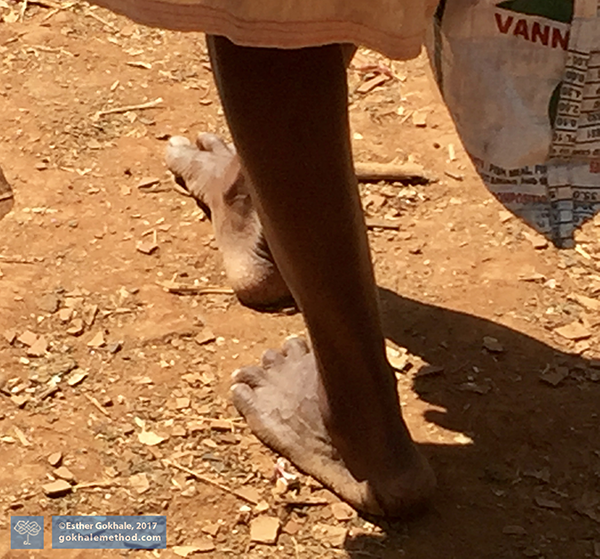
Natural gait includes a grabbing action by the foot as the glute contracts, with the back heel staying down
on the ground well into the step.
Glidewalking
A natural gait that makes good use of the glutes and feet is so rare these days that Gokhale Method teachers call it “glidewalking” to distinguish it from the various poor gait habits and compensations that most people develop in industrialized societies.
Walking distortions
Monty Python’s “Ministry of Silly Walks” comedy sketch, starring John Cleese.
The Monty Python “Ministry of Silly Walks” sketch shot to fame in 1970 and is still absurdly comic. Its silly walks are hilarious and clearly extreme, but some of their genius lies in their exaggeration of truth as they magnify the distortions and quirks that can be observed in our individual walking patterns.
A common walking distortion occurs when the pelvis is tucked under. Tucking the pelvis disadvantages the muscles of the glutes and feet which are designed to propel us forward. Without this propulsion from behind, muscles in the front of the body such as the psoas and quadriceps are obliged to take their place and pull us along. These muscles cannot give us the same stability however, and our ability to balance or catch ourselves from falling is reduced.

Non-industrialized populations the world over, despite their varied environments and cultural habits, share a common gait pattern. This photograph (Laurence K. Marshall) reveals no appreciable differences in walking between individuals, male or female, child or adult.
By contrast, if you observe a tribe or family of Kalahari Bushmen you might detect slight nuances, but each individual shares the same essential gait pattern. This is also observable in our young children and is preserved in the art and film of our ancestors prior to the 1920s.
All of the upside, none of the downside
While it’s true that any type of walking may bring benefits such as cardiovascular fitness, interaction with others, connection with Nature, and a low carbon footprint, there will be downsides for your balance if you have a poor gait pattern. A habit such as landing heavily means that your weight is committed forward too early in your step, removing the ability to side-step a loose tile or slippery floor. Many people lean backwards slightly as they walk, making them more prone to their heels slipping underneath them. By contrast, glidewalking is well balanced and stable, which lends it an innately peaceful and dignified quality.
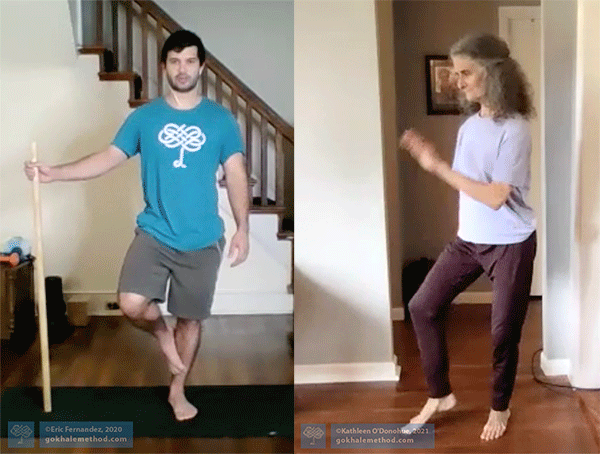
Gokhale Fitness teacher Eric Fernandez and Gokhale Moving Meditation teacher Kathleen O’Donohue take online participants through balance exercises and movements.
It’s not just an age thing
Many younger people with poorly developed walking muscles and a “flat butt” find themselves prone to falls and injury but are likely to put it down to poor coordination and clumsiness. Whatever your age, if you often feel unstable, trip frequently, notice that you struggle to stand on one leg in yoga classes, or cannot shift your weight smoothly in Tai Chi/Qigong, it is definitely worth looking at ways to improve your balance and movement.

Strengthening the gluteus medius muscles prepares you for glidewalking.
Learning to glidewalk
The best and safest starting point for learning glidewalking is to strengthen and become very familiar with using your gluteus medius muscles. You can find our favorite glute strengthening exercise, “leg raise,” in the exercise appendix of my book (pg. 213), “8 Steps to a Pain-Free Back”.
Or watch our Online University video clip here.
For those who are willing and able to follow detailed instructions, Lesson 8 in “8 Steps to a Pain-Free Back” takes you through the phases of glidewalking step-by-step.
If you have the resources, I recommend contacting a Gokhale Method teacher who can coach you and tailor lessons to your needs.
You are also invited to join me for the Free Online Workshop, Sturdy, Upright, and Tall: Posture for Aging, on June 29 (5 p.m. PT). Best foot forward!
1. Mario Inacio et al., “Gluteal Muscle Composition Differentiates Fallers from Non-fallers in Community Dwelling Older Adults,” BMC Geriatrics 14, no. 37 (March 2014), https://doi.org/10.1186/1471-2318-14-37.

Comments
Your article is very
Your article is very meaningful. At all ages we need to pay attention to our health and cookie clicker 2.
Add New Comment
Login to add commment
Login